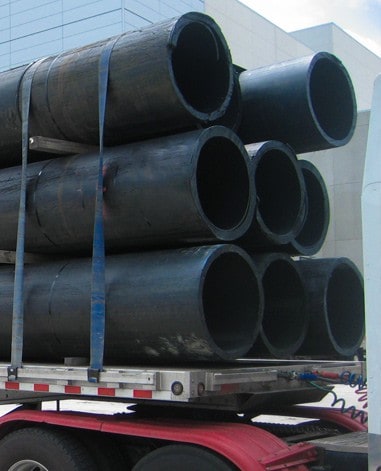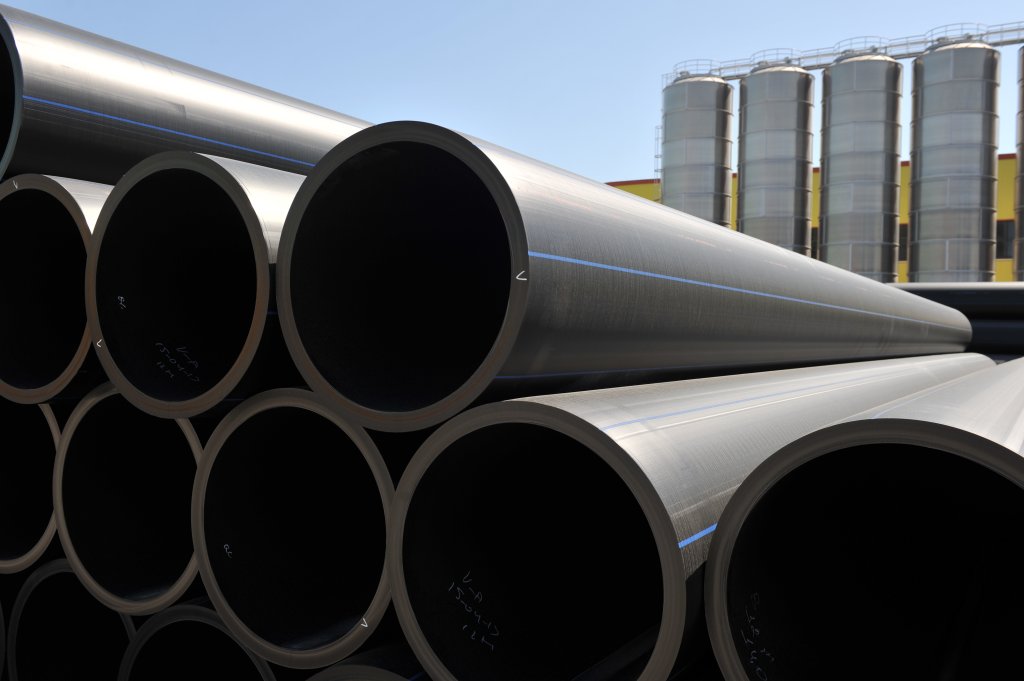Recognizing the Key Benefits of HDPE Pipeline for Water and Wastewater Monitoring
The usage of HDPE pipeline in water and wastewater administration presents countless benefits that merit consideration. Its extraordinary durability and lengthy life-span make it a preferred option for many projects. Furthermore, the material's resistance to corrosion and chemical damage improves its dependability in various settings. Nonetheless, the benefits extend beyond just longevity and resistance. Discovering its cost-effectiveness and environmental impact exposes much more engaging reasons for its widespread fostering in modern-day framework
Exceptional Durability and Long Life

HDPE pipe stands out for its phenomenal toughness and durability, making it a favored option in water administration systems. Created from high-density polyethylene, these pipes can hold up against considerable stress and tension, guaranteeing trustworthy efficiency over time. Their robust nature allows them to endure extreme ecological conditions, including temperature fluctuations and soil activities, which can cause other materials to stop working.
The life expectancy of HDPE pipelines typically surpasses 50 years, providing an economical option for districts and sectors alike. Additionally, the product's lightweight residential properties simplify installment, lowering labor costs and timeframes. This resilience reduces the demand for regular repair work or substitutes, even more improving its economic allure.
In water administration applications, the integrity of HDPE pipes indicates fewer interruptions and enhanced solution connection, making them indispensable to lasting infrastructure development. The mix of longevity and durability strengthens HDPE's function as a cornerstone in reliable water management options.

Resistance to Corrosion and Chemical Damages
While numerous materials give in to corrosion and chemical damage over time, HDPE pipelines show amazing resistance, making them perfect for different water monitoring applications. This durability stems from the molecular framework of high-density polyethylene, which is naturally non-reactive and does not rust like steels or deteriorate from direct exposure to harsh chemicals. As an outcome, HDPE is highly effective in environments with hostile materials, such as wastewater systems that might contain acids, bases, and natural solvents.
In addition, HDPE pipes can stand up to environmental aspects such as soil acidity and saline conditions, better improving their suitability for diverse applications (Texas hdpe pipe manufacturer). Their ability to maintain structural stability with time reduces the threat of leakages and failures, which is crucial in making certain the safety and security and integrity of water circulation and wastewater monitoring systems. The resistance to corrosion and chemical damage significantly contributes to the overall effectiveness and long life of HDPE piping options.
Cost-Effectiveness and Financial Benefits
When taking into consideration the financial effects of water administration systems, the cost-effectiveness of HDPE pipelines ends up being noticeable. These pipes use reduced installment and maintenance expenses compared to conventional materials like metal or concrete. Their light-weight nature streamlines transport and installment, resulting in reduced labor costs. Additionally, HDPE pipelines display a long life-span, frequently going beyond half a century, which equates to less substitutes and long-term financial savings.
Moreover, the resistance of HDPE to rust and chemical damage minimizes the demand for pricey repair work and replacements. The pipelines likewise sustain effective water circulation, decreasing energy costs related to pumping systems. By minimizing leakages and water loss, HDPE pipes contribute to considerable financial benefits for municipalities and industries alike. Overall, the preliminary financial click to read more investment in HDPE piping can yield considerable financial returns over the lifespan of the water monitoring system, making it a sensible option for sustainable infrastructure development.
Environmental Sustainability and Reduced Influence

Convenience and Flexibility in Setup
Since of their distinct properties, HDPE pipes offer impressive convenience and versatility in setup, making them suitable for a large variety of applications. Their light-weight nature enables for much easier handling and transport, decreasing labor costs and setup time. HDPE pipes can be curved and formed to fit different terrains and project demands, which is particularly useful in testing environments.
Furthermore, their resistance to rust and chemical damage allows for installation in varied setups without the requirement for specialized safety finishings. The capability to fuse joints produces a constant, leak-free system, improving the general stability and integrity of the setup. HDPE's versatility also suits ground movement, decreasing the risk of damages in locations susceptible to moving soil. Generally, these features make HDPE pipelines not just flexible but additionally a recommended option for water and wastewater management systems.
Often Asked Inquiries
Exactly How Does HDPE Pipeline Compare to PVC in Water Administration Applications?
HDPE pipeline supplies premium flexibility, resistance to corrosion, and sturdiness contrasted to PVC. Its lighter weight assists in less complicated installation, while its gas pipe replacement long life expectancy minimizes substitute prices, making HDPE a favored choice in water management applications.
What Is the Lifespan of HDPE Piping Under Common Conditions?
Under normal conditions, HDPE pipelines can have a life expectancy varying from 50 to 100 years. Their longevity and resistance to rust add to their lasting efficiency in numerous applications, making them a reliable selection for infrastructure.
Are HDPE Piping Recyclable After Their Life Span?
Yes, HDPE pipes are recyclable after their life span. Pipe Manufacturing Midland TX. They can be processed and repurposed right into new items, substantially decreasing environmental influence and advertising sustainability within the sector, making them an environment-friendly option for piping solutions
What Is the Installation Process for HDPE Piping?
The setup process for HDPE pipes includes website prep work, trenching, pipeline blend or mechanical joining, backfilling, and pressure screening. Appropriate techniques ensure a durable and reliable system for transporting water and wastewater effectively.
Can HDPE Piping Be Made Use Of for Both Potable and Non-Potable Water Solutions?
Yes, HDPE pipes can be utilized for both safe and clean and non-potable water supply. Their adaptability, sturdiness, and resistance to deterioration make them appropriate for numerous applications, making certain risk-free and efficient transport of water in various contexts.